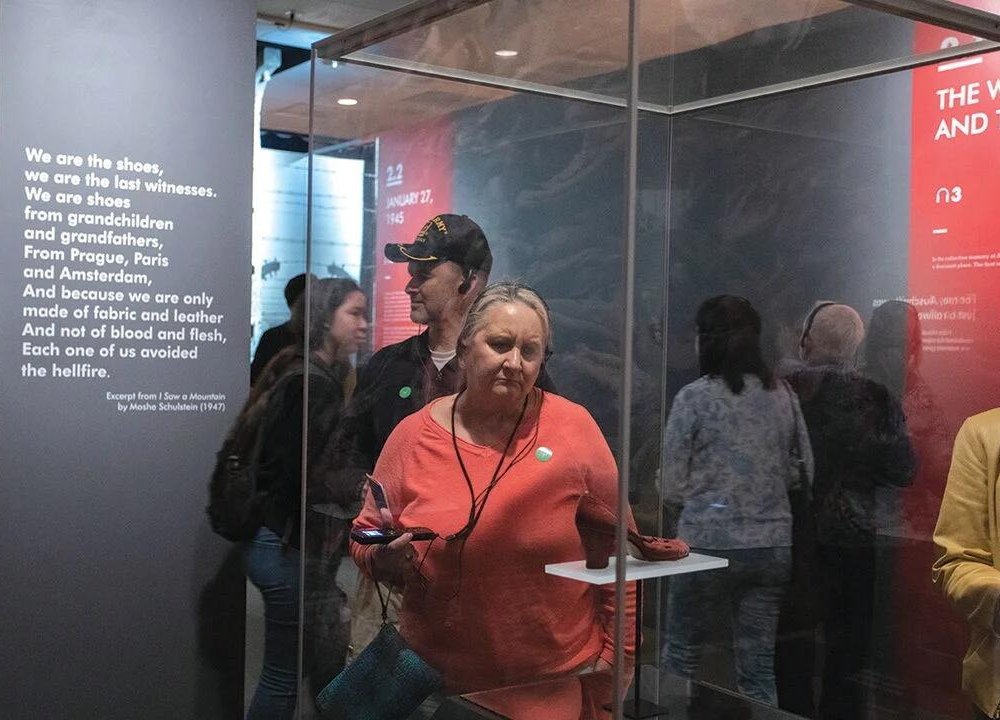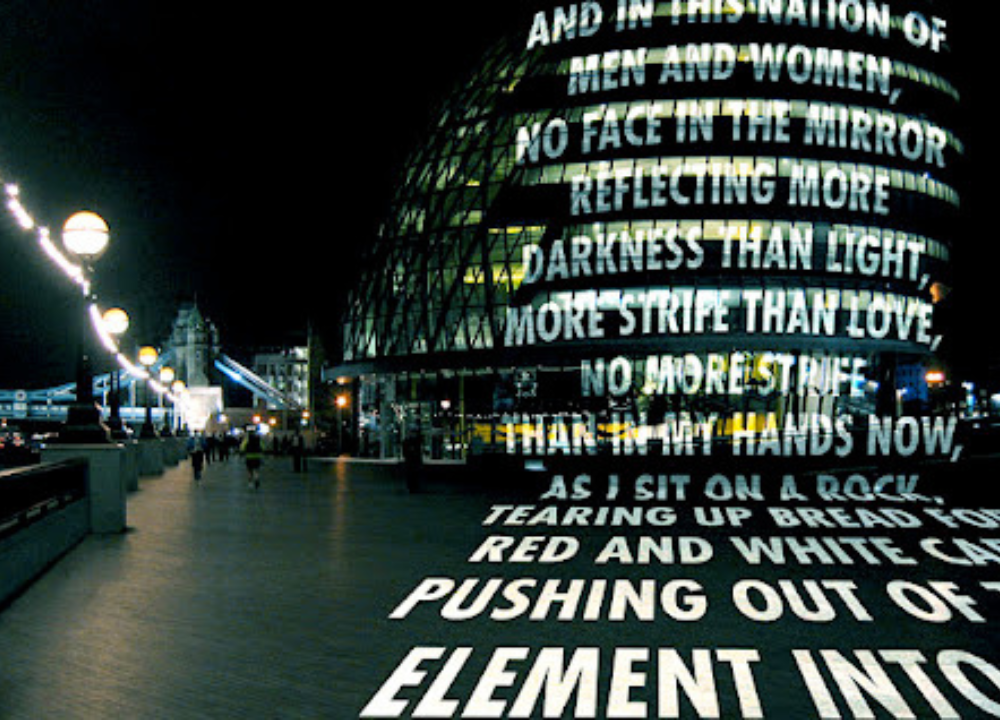The Reagan Library Auschwitz exhibit offered (March 24, 2023 through January 28, 2024) a profound insight into historical atrocities and serves as a poignant reminder of the horrors of the Holocaust. The exhibit showcases artifacts, testimonies, and interactive displays that provide a somber yet educational experience for visitors.
By delving into this dark chapter of history, the exhibit encourages reflection, remembrance, and a commitment to never allowing such atrocities to repeat. As visitors explore the exhibit, they are confronted with the stark reality of the Holocaust and the enduring importance of preserving the memory of its victims.
The Reagan Library’s dedication to educating the public on this tragic history is commendable and essential in ensuring that future generations never forget the lessons learned from the past.
Ronald Reagan’s Legacy
Ronald Reagan’s legacy includes the exploration of history through exhibits at the Reagan Library, including the recent addition of the Auschwitz exhibit. This initiative offers a unique opportunity for visitors to gain insights into the impact of historical events and the importance of remembrance.
Early Life And Political Career
Ronald Reagan, born on February 6, 1911, in Tampico, Illinois, had an inspiring journey from Hollywood to the White House. In his early life, Reagan worked as a radio sports announcer and later became a successful actor.
Reagan’s political career took off when he became the Governor of California in 1967. His charisma, strong conservative values, and effective communication skills quickly propelled him to the national stage. Reagan’s ability to connect with voters and his unwavering determination helped him win the Republican presidential nomination in 1980.
Throughout his political career, Reagan remained true to his conservative principles, emphasizing limited government intervention, lower taxes, and a strong national defense. He firmly believed in the power of the free market and individual liberty, which resonated with many Americans.
Presidential Achievements
As the 40th President of the United States, Reagan left a profound impact on American history. He is often credited with revitalizing the economy and restoring the country’s morale. During his presidency, he implemented a series of economic policies known as “Reaganomics”, which aimed to reduce government regulations and stimulate economic growth.
Reagan’s dedication to defeating communism led to the end of the Cold War. His strong stance on national defense and his famous challenge to Soviet leader Mikhail Gorbachev to “tear down this wall” helped pave the way for the reunification of Germany and the eventual collapse of the Soviet Union.
Additionally, Reagan prioritized improving relations with other nations, particularly through his diplomatic efforts with former Soviet premier Gorbachev. His strategic approach to diplomacy not only helped in reducing tensions between the two superpowers but also paved the way for future peace negotiations and cooperation.
Furthermore, Reagan championed conservative values and promoted traditional family values during his presidency. He believed in the importance of traditional institutions, such as marriage and family, in a strong and prosperous society.
In conclusion, Ronald Reagan’s legacy is marked by his influential early life, successful political career, and remarkable achievements as President of the United States. His unwavering commitment to conservative principles, economic reforms, and international relations left an indelible mark on American history. The impact of his leadership is still felt today, and his legacy serves as an inspiration for future generations.
The Significance Of The Reagan Library
Exploring the history of the Reagan Library is a significant aspect of understanding the impact of President Ronald Reagan’s legacy. The library serves as a repository for numerous exhibits and collections that shed light on his presidency and the historical events that shaped his tenure. One such exhibit is the Auschwitz Exhibit, which holds immense historical significance. Delving into the establishment, purpose, exhibits, and collections of the Reagan Library offers a unique opportunity to grasp the essence of this pivotal historical site.
Establishment And Purpose
The Reagan Library was established in 1991 to preserve the memory and legacy of President Ronald Reagan. Its primary purpose is to provide a comprehensive view of his life, career, and the events that transpired during his presidency. The library is a vital resource for scholars, historians, and the public to gain insights into the pivotal moments of the Reagan era.
Exhibits And Collections
The library boasts a diverse range of exhibits and collections that encapsulate the essence of President Reagan’s impact on the nation and the world. From authentic artifacts to interactive displays, the exhibits offer a captivating journey through the significant milestones of his presidency. The collections include documents, photographs, and personal belongings that provide a deeper understanding of Reagan’s leadership and the historical context of his time in office.
Highlights Of The Auschwitz Exhibit
The Reagan Library Auschwitz exhibit offered visitors an opportunity to delve into the historical context of one of the darkest periods in human history. It provided a poignant look at the Holocaust and the Auschwitz concentration camp, emphasizing the importance of preserving the memory of the victims and educating current and future generations about the atrocities that occurred.
Interactive Displays
The exhibit features interactive displays that brought the history of Auschwitz to life, allowing visitors to engage with the material in a meaningful and immersive way. Through the use of technology and multimedia elements, visitors can gain a deeper understanding of the experiences of those who were imprisoned in the camp, making the historical narrative more accessible and impactful.
Testimony And Artifacts
One of the most compelling aspects of the exhibit is the firsthand testimony and authentic artifacts on display. Visitors explored personal accounts from survivors, as well as rare items from the camp, providing a tangible connection to the individuals who endured unimaginable suffering. These elements humanize the historical narrative and make it resonate on a deeply personal level.

Understanding The Holocaust
The Holocaust was one of the most horrific and devastating events in human history, where six million Jews were systematically persecuted and killed by the Nazis. Understanding the Holocaust is essential to ensuring it is never forgotten and to learn from the mistakes of the past. In this section, we will explore the origins and Nazi ideology that fueled this genocide, the persecution and death camps that were established, and hear extraordinary survivor stories that provide a glimpse into the strength and resilience of the human spirit.
Origins And Nazi Ideology
The Holocaust didn’t occur overnight; it was a result of deep-rooted Nazi ideology and a series of events that unfolded leading up to World War II. Adolf Hitler and the Nazi Party came to power in Germany in 1933, promoting a racist and anti-Semitic agenda. Their ideology was based on the belief in Aryan supremacy, considering Jews as “subhuman” and a threat to the German nation. Hitler and his followers used propaganda, discrimination, and oppressive policies to scapegoat and isolate the Jewish population, ultimately paved the way for the Holocaust.
Persecution And Death Camps
The Nazi regime implemented a systematic program of persecution against Jews, which intensified with the onset of World War II. Jews were stripped of their rights, livelihoods, and subjected to relentless discrimination and violence. As the war progressed, the Nazis established death camps, specifically designed for mass murder. Auschwitz, perhaps the most infamous death camp, witnessed the murder of over a million Jews. The barbaric methods employed in these camps, such as gas chambers and crematoriums, exemplify the depths of human cruelty and the scale of this genocide.
Survivor Stories
Amidst the horror and despair, there were remarkable tales of survival, resilience, and resistance during the Holocaust. These survivor stories offer a glimmer of hope and shed light on the strength of the human spirit in the face of unimaginable adversity. From Anne Frank, whose diary documented the life of a Jewish girl hiding from the Nazis, to Primo Levi, who chronicled his time in Auschwitz, these stories serve as a powerful reminder of the value of life and the importance of remembrance.
The Reagan Library Auschwitz Exhibit is an opportunity to explore the history of the Holocaust and gain a deeper understanding of its significance. By understanding the origins and Nazi ideology, the persecution and death camps, and hearing survivor stories, we can ensure that the Holocaust is not forgotten and that the lessons learned from this dark chapter of human history shape a more compassionate and tolerant future.
Educational Value Of The Exhibit
The Reagan Library Auschwitz Exhibit held immense educational value, offering profound insights into one of the darkest periods of human history. By delving into the horrors of the Holocaust, this exhibition served as a poignant educational tool, fostering a deeper understanding of the atrocities that transpired during World War II.
Raising Awareness
The exhibit played a vital role in raising awareness about the Holocaust’s grim reality, ensuring that visitors are well-versed in the historical significance of Auschwitz. Through curated displays and informational resources, it encouraged a thoughtful examination of the past, contributing to a more comprehensive understanding of the events that unfolded.
Promoting Tolerance And Compassion
This exhibition serves as a catalyst for promoting tolerance and compassion, as it encouraged visitors to reflect on the human cost of intolerance and bigotry. By immersing oneself in the stories and artifacts on display, individuals are compelled to confront the devastating consequences of discrimination and hatred, fostering a greater appreciation for diversity and empathy.
Conclusion
The Reagan Library Auschwitz Exhibit offers a deeply moving and educational experience, shedding light on the atrocities of the Holocaust and the resilience of its survivors. Through its collection of artifacts and immersive displays, this exhibit provides visitors with a tangible connection to history.
By visiting this exhibit, we honor the memory of those who suffered and ensure that their stories are never forgotten. Discovering the past allows us to reflect on the present and strive for a better future.




